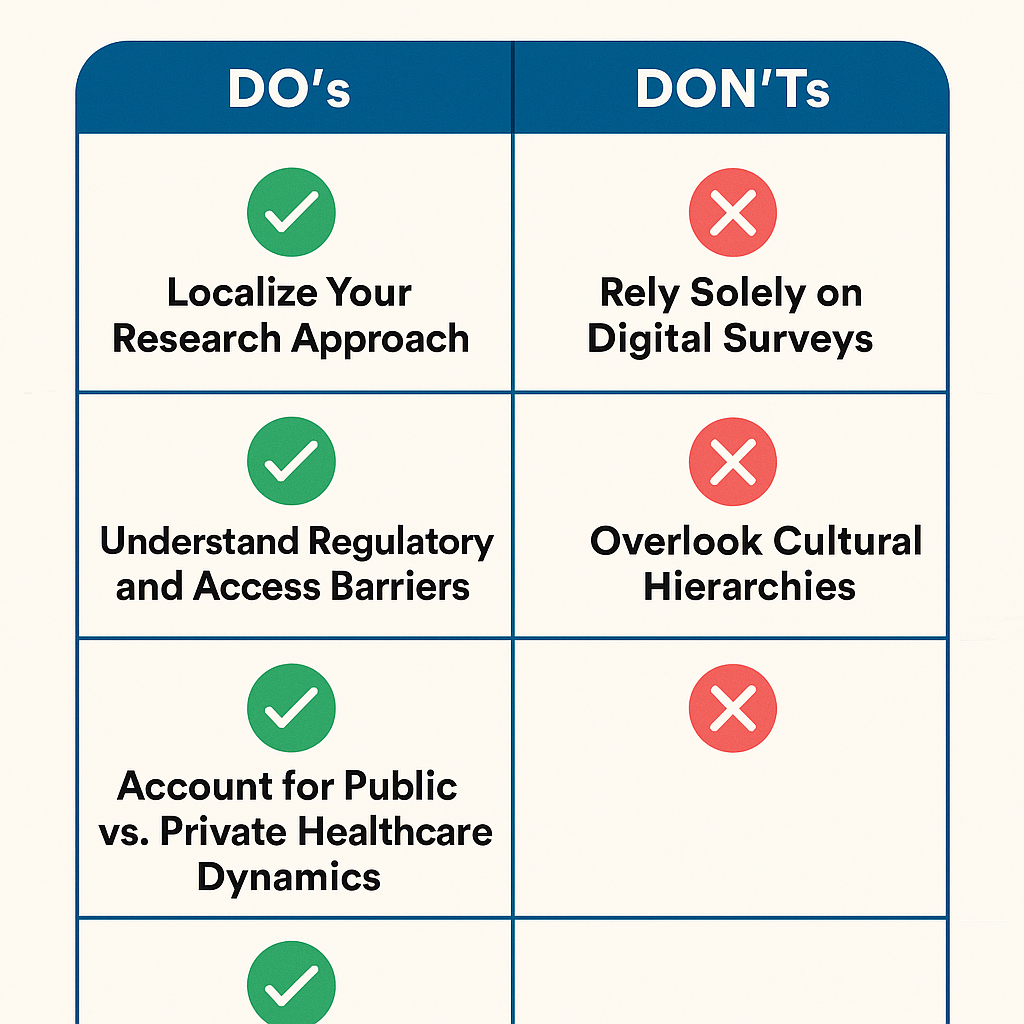Conducting Life Science Market Research in APAC

Strong 8k brings an ultra-HD IPTV experience to your living room and your pocket.
The Asia-Pacific (APAC) region represents one of the most dynamic opportunities for companies in the life sciences sector. Rapid urbanization, rising healthcare investment, an aging population, and digital health innovations are driving growth across markets like China, India, Japan, South Korea, and Southeast Asia.
However, conducting life science market research in APAC requires more than translating a Western approach. It demands deep cultural awareness, local regulatory knowledge, and the right research methodology.
Whether you're launching a new diagnostic product, evaluating expansion opportunities, or assessing partnership potential, here are the key do’s and don’ts to ensure success in your APAC research strategy.
✅ DO: Localize Your Research Approach
APAC is not a monolith. Each country has distinct healthcare systems, patient behaviors, reimbursement models, and decision-making hierarchies. Research strategies that work in Singapore may fall flat in India or Vietnam.
Tip:
Partner with a market research consultant for healthcare who understands the nuances of each target market and can tailor methodologies accordingly.
✅ DO: Understand Regulatory and Access Barriers
Market access challenges are often underestimated in APAC. From China’s evolving NMPA regulations to Japan’s reimbursement limitations and Indonesia’s local content requirements, regulatory hurdles can significantly impact market entry and product adoption.
Tip:
Use expert market research to speak with former regulators, local key opinion leaders (KOLs), and reimbursement specialists to validate feasibility early on.
✅ DO: Account for Public vs. Private Healthcare Dynamics
In countries like India and the Philippines, the private sector dominates urban care, while in places like Japan or Korea, the public system holds more sway. Understanding where your product fits — and who makes the purchasing decisions — is critical.
Tip:
Segment your research by provider type, geography, and hospital tier to uncover more actionable insights.
❌ DON’T: Assume English Is Enough
While English is widely used in business, especially in countries like Singapore and India, it may not be the best language for engaging frontline healthcare professionals, patients, or government stakeholders in places like Japan, Thailand, or South Korea.
Tip:
Work with skilled translators and cultural liaisons to ensure your surveys and interviews are not only accurate, but contextually appropriate.
❌ DON’T: Rely Solely on Digital Surveys
In some APAC markets, digital literacy or internet access may be limited among target audiences. Physicians may prefer phone interviews. Patients may require face-to-face or moderated discussions to open up.
Tip:
Adopt a hybrid research methodology combining online, phone, and in-person elements depending on the market and respondent type.
❌ DON’T: Overlook Cultural Hierarchies
In many Asian cultures, hierarchies in clinical settings matter. A junior physician may hesitate to speak candidly, or a respondent may avoid giving negative feedback to preserve harmony.
Tip:
Structure your interviews to encourage honesty — for example, by using third-party moderators, anonymous inputs, and scenario-based questioning.
Final Thoughts
Successfully navigating APAC’s complex and culturally rich life sciences landscape requires more than just deploying surveys or gathering data — it demands local expertise, strategic framing, and deep respect for market differences.
By partnering with specialized research teams and local experts, companies can uncover not just what’s happening, but why it’s happening — turning regional insights into global opportunity.
Note: IndiBlogHub features both user-submitted and editorial content. We do not verify third-party contributions. Read our Disclaimer and Privacy Policyfor details.



